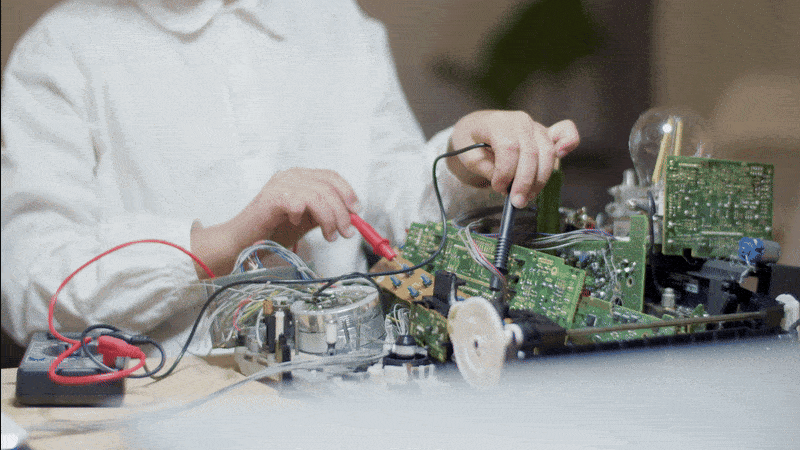As the semiconductor industry continues to grow, the demand for faster, more efficient, and cost-effective chip level test techniques in VLSI becomes increasingly crucial. Testing is a critical stage in the design and production of Very-Large-Scale Integration (VLSI) chips, ensuring that complex integrated circuits (ICs) perform as expected.
In 2024, advancements in VLSI chip testing techniques are heavily driven by the need for reliability, speed, and accuracy. These testing methods are essential for both chip level and system level test techniques in VLSI, as they help in identifying defects early in the design cycle, minimizing time to market, and reducing production costs.
This guide will explore the chip level test techniques in VLSI that every job seeker must know, focusing on the latest trends, methodologies, and challenges faced by the VLSI industry today.
Emerging Trends in VLSI Testing: What Job Seekers Should Know in 2024
Importance of Chip Level and System Level Testing in VLSI
In VLSI, chip level and system level test techniques in VLSI serve different purposes:
- Chip Level Test Techniques in VLSI: These techniques focus on ensuring that the individual ICs or components on a chip are functioning correctly. Testing at this level is performed right after the fabrication process to catch any manufacturing defects, such as short circuits or open circuits.
- System Level Testing in VLSI: This involves testing the complete system or SoC (System-on-Chip), where multiple chips and components are integrated into one functioning unit. It ensures that the chips work in harmony when integrated with other systems, such as processors, memory, and I/O modules.
Both levels of testing are indispensable to ensure high performance, reliability, and manufacturability of VLSI designs.
Challenges in VLSI Testing in 2024
As the complexity of VLSI designs increases, so do the challenges in testing them. Modern chips contain billions of transistors, and testing every single component effectively requires sophisticated methods. Some key challenges faced in chip level test techniques in VLSI today include:
- Increased Design Complexity: With the development of AI, 5G, and IoT-enabled devices, chips are becoming more complex. Testing these chips without impacting performance or time-to-market is a significant hurdle.
- Power Consumption: Testing chips at various power levels to ensure they function properly under different operating conditions is vital.
- Fault Coverage: Ensuring high fault coverage is essential for detecting defects at both chip level and system level. Fault models must be robust enough to cover all possible defects without compromising speed.
- Cost and Time: As devices become more compact and feature-rich, the time and cost of testing become more significant. Minimizing test time while maintaining accuracy is critical.
Key Chip Level Test Techniques in VLSI
In 2024, several VLSI chip testing techniques have emerged or been enhanced to meet the challenges of the evolving industry. Here’s a breakdown of the latest chip level testing techniques:
Scan-Based Testing
One of the most widely used chip level test techniques in VLSI, scan-based testing simplifies testing complex sequential circuits. This technique involves incorporating scan chains into the circuit design, allowing easy access to the internal state of the system. The scan chains are used to shift test patterns into the circuit and observe outputs, enabling the identification of faults.
- Enhanced scan techniques: Today, we see improvements in scan-based testing, such as the use of adaptive scan patterns and low-power scan techniques. These improvements minimize power consumption during testing, which is particularly important in modern power-efficient chip designs.
Built-In Self-Test (BIST)
BIST is a critical component of VLSI chip testing techniques, enabling chips to test themselves. This technique inserts additional logic into the chip, allowing it to generate test patterns and analyze outputs internally. BIST is popular because it reduces the dependency on external testing equipment and helps in testing chips even after they are deployed in the field.
- Innovations in BIST: In 2024, BIST has advanced with better fault coverage and diagnostic capabilities. BIST systems are now able to detect a wider range of faults and provide more detailed information on where and how a fault occurs.
Logic Built-In Self-Test (LBIST)
LBIST is an extension of BIST, focusing specifically on testing the logic components of a VLSI chip. In recent years, chip level test techniques in VLSI have adopted LBIST extensively due to its ability to run in the background and test the chip while it’s in use, providing constant monitoring and fault detection.
- AI-enhanced LBIST: In 2024, AI algorithms are being integrated into LBIST techniques, enabling real-time diagnostics and faster fault detection, making it an essential part of chip level and system level test techniques in VLSI.
Memory Built-In Self-Test (MBIST)
As memory plays a crucial role in modern SoCs, MBIST focuses on testing memory blocks within the chip. Like LBIST, this self-testing technique allows for continuous monitoring and testing of memory cells to detect faults like stuck-at faults, transition faults, and coupling faults.
- Advances in MBIST: With the advent of larger memory blocks, MBIST now supports more complex memory architectures and offers faster diagnostic capabilities, ensuring robust testing of DRAM, SRAM, and flash memory integrated into the chip.
Delay Testing
Delay testing is an important technique in chip level test techniques in VLSI for detecting timing-related defects. Timing faults, such as slow paths or race conditions, can severely impact chip performance.
- Latest Trends in Delay Testing: In 2024, delay testing methods are being improved to handle higher clock speeds and the increased complexity of modern VLSI designs. Adaptive delay testing now allows for testing chips at various frequencies, ensuring they operate reliably across different operating conditions.
System Level Test Techniques in VLSI
While chip level test techniques in VLSI focus on individual components, system-level testing ensures that the entire system, including all interconnected chips, works seamlessly together. Key system level test techniques in VLSI in 2024 include:
Functional Testing
Functional testing checks the complete functionality of the VLSI system in real-time conditions. It ensures that all components, from processors to memory and I/O, work together without faults.
- Functional Test Automation: In 2024, automation tools powered by AI are improving the speed and accuracy of functional tests, reducing the manual effort and improving test coverage.
Burn-In Testing
Burn-in testing subjects a system to extreme operating conditions, such as high temperatures and voltages, to identify potential early-life failures in chips. This is especially important for mission-critical applications, such as aerospace and automotive, where reliability is paramount.
System-on-Chip (SoC) Testing
As more devices integrate multiple components into a single SoC, system-level testing must verify the interaction of multiple components, including processors, memory, and communication interfaces.
- Advanced SoC Testing: With the increasing complexity of SoCs, multi-core, and heterogeneous architectures, new techniques such as hierarchical testing and power-aware testing have emerged in 2024. These techniques ensure that each subsystem in the SoC is tested independently before integrating the entire system for testing.
Future of VLSI Testing: Trends for 2024 and Beyond
The future of VLSI chip testing techniques is being shaped by innovations like AI, machine learning, and edge computing. Some of the trends that job seekers need to keep in mind include:
- AI-Powered Testing: AI and machine learning are being increasingly integrated into testing techniques, allowing for predictive fault analysis, automated test generation, and real-time diagnostics.
- Low-Power Testing: As devices become more power-efficient, testing techniques must adapt. Low-power scan and BIST techniques are gaining traction, ensuring minimal energy usage during testing.
- Quantum and Neuromorphic Testing: The rise of quantum and neuromorphic computing architectures introduces new testing challenges. In 2024, new techniques are emerging to handle the unique nature of quantum states and neuromorphic chips, signaling a shift in chip level and system level test techniques in VLSI.
Conclusion
For job seekers in the VLSI field, mastering the latest chip level test techniques in VLSI and VLSI chip testing techniques is crucial for staying competitive in the industry. As testing methodologies continue to evolve in response to increasing chip complexity and performance demands, professionals must remain updated on these advancements to succeed.
Whether it’s understanding the latest in scan-based testing, BIST, or system level testing, knowledge of these testing methods is vital for ensuring that VLSI designs meet the high standards of performance, reliability, and efficiency required in today’s tech-driven world.

Why VLSIFIRST Is the Best Career Launchpad for ECE, EEE & CSE Graduates
Discover why ECE, EEE, and CSE graduates choose VLSIFIRST for high-paying VLSI careers. Learn how industry-ready training, projects, and placements accelerate your journey.

Engineering Completed? How VLSIFIRST Helps You Enter VLSI Faster
Discover how VLSIFIRST helps engineering graduates fast-track their VLSI careers with industry-ready training, projects, mentorship, and job-oriented skill development.

Clock Gating vs Power Gating: Implementation, RTL Flow & Verification Guide
Learn how to implement clock gating and power gating with RTL design steps, backend changes, UPF flow, and a full verification checklist for efficient low-power VLSI design.
_11zon.jpg)
What to Do After Engineering? Why VLSIFIRST Leads Chip Design Careers
Discover why VLSIFIRST is becoming the top choice for engineering graduates pursuing VLSI and semiconductor careers. Explore job roles, growth, and industry-ready training benefits.

VLSI Career Roadmap for Engineering Graduates: Step-by-Step Guide
A complete VLSI career roadmap for engineering graduates. Learn skills, domains, tools, and steps to become a successful semiconductor engineer in the chip design industry.
Soft And Technical Skills Interviewer Expects From ECE Graduate, Sensor Fusion In Automotive Embedded Systems, How To Stay Updated With Latest RTL Design Technique, Highest Paid VLSI Jobs, VLSI RTL Design and Verification Course in Chennai, VLSI Interview Questions Book, Does ECE Have Scope In Future, VLSI Training in Banjara Hills, Benefits Of Pay After Placement For VLSI Career Seekers, VLSI Topics ECE Students Need To Learn For Core Company Employment, VLSI Interview Questions For Fresher, Latest Tools For Every Physical Design Job Seekers, Design Verification Engineer Career
Hours
Copyright 2025 © VLSI Technologies Private Limited
Designed and developed by KandraDigitalCopyright 2025 © VLSI Technologies Private Limited
Designed, Developed & Marketing by KandraDigital
